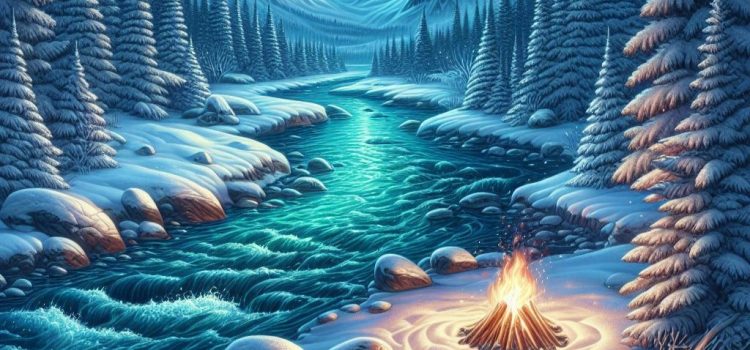
This is a free excerpt from one of Shortform’s Articles. We give you all the important information you need to know about current events and more.
Don't miss out on the whole story. Sign up for a free trial here .
What is the winter solstice? What makes the winter solstice the shortest, darkest day of the year? Why have humans marked the occasion since prehistory?
Each year, the astronomical winter begins with the shortest day of the year: the winter solstice, the day with the fewest hours of sunlight. In the northern hemisphere, the winter solstice occurs every year on December 21 or 22. After that point, the days begin to grow longer.
Here’s a look at what the winter solstice actually is and why it’s so historically and culturally significant.
What Makes the Winter Solstice the Shortest Day of the Year?
Everyone has heard of it, but exactly what is the winter solstice? Even though most of us learned the basics about our solar system and the Earth’s place within it in elementary school, it’s not entirely intuitive what makes the winter solstice the shortest day of the year—or even how the movement of the Earth produces the different seasons we experience. Most people assume that the seasons change with the Earth’s distance from the sun. But the Earth is actually closest to the sun in December and January, and farthest from it in July and August. So there must be something else going on.
Let’s go back to the basics for a moment: The Earth orbits the sun once a year, traveling at a speed of about 18.5 miles per second. As it travels around the sun, the Earth also rotates on its axis every 23.9 hours.
The Earth’s axis always points in the same direction. So different parts of the Earth are tipped toward or away from the sun throughout the year. It’s this “axial tilt” that produces our seasons. When your hemisphere is tipped toward the sun, you experience summer. But when your hemisphere is tilted away from the sun, you experience winter.
The tilt of the Earth also causes the height of the sun in our sky to change throughout the year. For months prior to the winter solstice, the sun’s arc across the sky grows lower and shorter. Around December 21, when the northern hemisphere tilts as far from the sun as it can, the sun travels its shortest, lowest path through the sky. Because the solstice marks the most extreme tilt of the earth relative to the plane of its orbit around the sun, it also signals that change is on the way: that long, dark nights will give way to longer, brighter days after the winter solstice is behind us.
Why Do Humans Care About the Winter Solstice?
Marking the transition from autumn to winter or spring to summer is a fundamentally human endeavor: one that enables us not only to observe the change in our environment but also to make sense of the passage of time. Early humans observed the sun and realized that its path across the sky shifted throughout the year. It’s thought that prehistoric monuments such as Stonehenge in England and Machu Picchu in Peru were constructed to track the sun’s progress. Researchers believe that people have marked the solstices—and the equinoxes, the two days of the year when the day and the night are the same length—since prehistory.
Experts say that ancient people’s observation of the solstices enabled them to engage in seasonal timekeeping. When early humans’ survival depended on their knowledge of the changing seasons, there was a practical benefit to knowing when winter would begin. But there was something more to be gained by making astronomical observations. As ancient people noticed that the sun falls lower and lower in the winter, they may have feared that it would disappear altogether. They might also have come to believe that they needed to complete certain rituals to ensure that it returned. By creating practices to stave off the darkness, they found a way to make meaning of their relationship with the world.
Researchers believe that rituals and traditions that mark the winter solstice date back to prehistory in many places. In North America, members of indigenous nations have inherited and carried on a diverse range of traditions marking the beginning of winter. Though every indigenous community’s practices and beliefs are different, experts say that what’s often shared between these traditions is a focus on storytelling and ritual. Ancient indigenous societies may have celebrated the winter solstice to honor their deities and celebrate the return of the sun. Winter solstice traditions change over time. But scholars say that these rituals have always given people a way to understand how our lives are interconnected with the rest of the world.
The winter solstice is a time to set intentions for the longer, brighter days ahead and to give thanks for the community that humans share with other humans and with the non-human inhabitants of the Earth.

Want to fast-track your learning? With Shortform, you’ll gain insights you won't find anywhere else .
Here's what you’ll get when you sign up for Shortform :
- Complicated ideas explained in simple and concise ways
- Smart analysis that connects what you’re reading to other key concepts
- Writing with zero fluff because we know how important your time is






